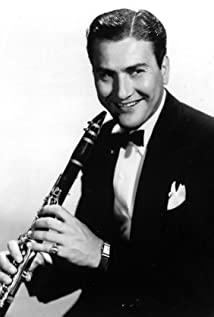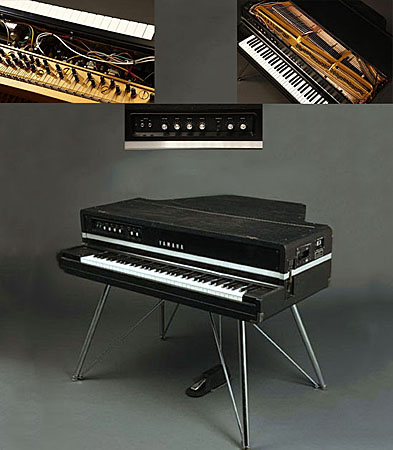

Owner: HWMC
Catalog#: CL-CHZT-11
Yamaha CP-70B electric grand piano W/COA Provenance: ARTIE SHAW
Keyboard
Yamaha CP 70 Electric Grand Piano - Artie Shaw
Japan
Yamaha
Wood, metal
ca. 1980’s
Height: 37 in, Width: 51 in, Depth: 41 in
Strings – Zither – Keyboard
This 73 Key Yamaha CP 70 Electric Grand Piano was first introduced to the market in the mid 70’s and production ceased in the mid-80’s. It included several improved features such as balanced outputs (hence the B added to CP70) and included an improved preamp, etc.
The CP70B is called an electric grand piano, even though it has hammers and strings, because it has a sophisticated piezo type of pick-up system that translates the vibrating strings into an audio signal. This was great for touring because of eliminating the hassle involved with micing regular heavy, large pianos. You can still hear the piano play acoustically with no power on, but it isn’t as loud as a regular baby grand piano.
The CP70 was the standard touring piano in the 70’s and 80’s. It was used by just about every artist and group at one time or another in the studio or on the road. Other artists who used the CP70 included John Paul Jones of Led Zeppelin, Stevie Wonder, ELO, Genesis, Boston, Hall and Oates, Journey, etc. In the 80’s you had bands such as Asia, U2, British pop such as Howard Jones, and others such as Simple Minds during that era of music. The musical style didn’t matter.
In 1981, Shaw organized a new Artie Shaw Band, and this Yamaha electric grand keyboard was used by Artie and his band on their road trips.
Born Arthur Jacob Arshawsky in New York City (May 23, 1910-December 30, 2004), American Legendary Jazz Clarinetist, Composer, and Bandleader Artie Shaw grew up in New Haven, Connecticut. He began learning the saxophone when he was 13 years old and in 1925, he joined Johnny Cavallaro’s dance band as an alto saxophonist. A year later, he switched to the clarinet, which became his principal instrument. Shaw was an innovator in jazz; he fused jazz with classical music by adding strings to his arrangements, experimented with bebop, and formed “chamber jazz” groups that utilized such novel sounds as harpsichords, or Afro-Cuban music. During World War II, Shaw enlisted in the US Navy and was asked to form a band that ended up performing throughout the Pacific War Zone. During the late 1940’s, he performed classical music at Carnegie Hall and with the New York Philharmonic under Leonard Bernstein. He made recordings, including the classic hit, “Little Jazz” with Roy Eldridge, in 1945. Shaw continued to perform and record into the next decade with a small group named Gramercy Five. He retired in March, 1957. Then in 1981 he was persuaded to reorganize his band, going on a road trip using this Yamaha CP-70B electric grand piano.
